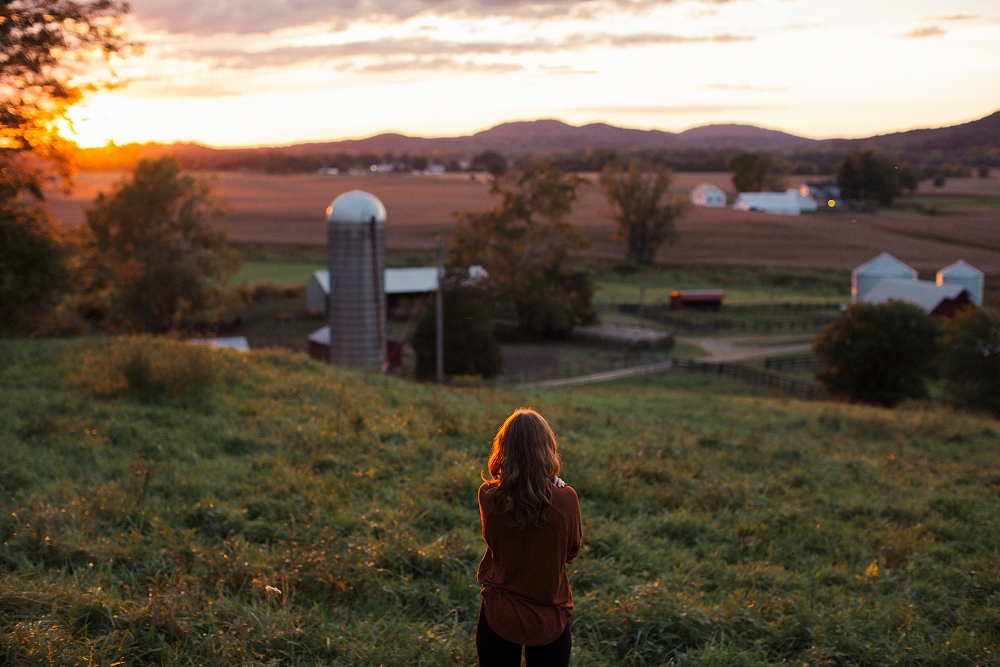There’s a certain quiet that settles in when the morning light reaches the grass. The low hum of birds, the scent of damp soil, the pause before the day takes shape. Most of us picture our sanctuary as the spot just outside the door, a favorite chair, a shaded patio, a small patch of garden where the world slows.
Real calm often lives farther out. It shows up in the open stretch of field that catches the wind, the long gravel drive that leads home, and the edges of land that rarely get a second glance. When those spaces are tended with care, they begin to mirror the stillness we crave indoors. The work of keeping them in order, clearing, smoothing, shaping, becomes a kind of therapy that restores both land and mind.
Why the Edges of Your Property Matter
It’s easy to focus on the spaces closest to daily life, the porch, the garden, the path to the mailbox. Those places are familiar and often designed with comfort in mind. Yet the quieter edges of your property tell a deeper story about how you live. When the driveway washes out, weeds climb the fence line, or the back field feels forgotten, it creates a low hum of disorder. You may not notice it at first, but it tugs at your sense of ease.
Caring for those outer spaces changes the way you feel at home. An hour spent smoothing a rutted path or clearing a stretch of ground brings a kind of completion that’s hard to find on a screen. There’s beauty in the effort itself, a rhythm that settles the mind and brings you back to the ground beneath your feet. The reward is more than a tidier property. It’s the calm that comes from knowing every corner of your space feels seen and cared for.
Practical Beauty: Merging Form and Function
Creating calm outdoors isn’t only about planters or pretty lights. It’s the quiet satisfaction of a property that works as beautifully as it looks. A smooth path, a level drive, a field that drains well; these choices bring order to the landscape and make every part of it easier to enjoy. The tools you choose shape that sense of ease.
If you manage gravel or wider stretches of land, the right equipment matters. A dependable grader blade for a tractor can turn rough ground into a surface that feels intentional and well-kept. It saves time and strain, which leaves more space for the good parts of the day, watching light shift across an open field, hearing the clean crunch of gravel under your tires.
The goal isn’t perfection. It’s harmony, a simple alignment between your effort and the way the land wants to settle. When the practical side of your property is in balance, peace shows up more easily.
Rituals of Outdoor Stewardship
Tending the land through the seasons is deeply grounding. Each task, trimming back growth, raking leaves, leveling a stretch of earth, becomes part of a steady cycle of care. These moments remind you that your relationship with the outdoors is more than comfort or appearance. It’s an exchange between what you give and what the land gives back.
Small routines clear mental clutter. Even light work outside can reset the nervous system. Time in natural settings has been shown to lower stress and sharpen attention. Calm doesn’t always come from stillness. It often grows through motion, through the simple acts that keep life working.
Over time, these patterns feel less like chores and more like personal rituals. The soft scrape of a rake, the steady pull of a tool across gravel, the way your breath falls into step with the work, all of it becomes a quiet meditation that anchors you in the present.
Confidence in the Outdoors
There’s a quiet confidence that grows when you care for your own land. It doesn’t require mastering every tool or knowing every answer. It starts with the assurance that your hands can shape the space you live in. Clearing a path, grading a stretch of driveway, trimming the edges that get wild by midsummer, each task becomes proof that you can create ease where there once was effort.
That confidence builds in layers. The first time you try a new piece of equipment, it may feel uncertain. With practice, you become more attuned to what the land needs, and to what you need in return. The work begins to feel like a partnership.
Being outdoors invites presence. It teaches patience and trust in small steps. Each improvement, no matter how modest, reinforces the sense that calm is something you can build, one grounded task at a time.
Small Shifts, Big Peace
Peace rarely arrives in grand gestures. It often shows up in small choices, clearing the path before winter, smoothing the driveway after heavy rain, and keeping the view beyond the porch free of clutter. These simple acts give the land a sense of order, and that order shapes how you feel each time you step outside.
Even a small place to pause at the edge of the yard can help you reconnect with stillness. If you need ideas, draw a few from crafting cozy corners or add one quiet detail that makes the space feel cared for. The aim isn’t a perfect landscape. It’s a living one, tended and in rhythm with your days.
When the land is balanced, the mind often follows. A well-kept space supports a calm that lingers long after the work is done and reminds you that serenity can be made, one small shift at a time.
Conclusion: The Peace That Spreads
When you begin to see your entire property as part of your sanctuary, the landscape changes inside and out. Each task, from shaping the driveway to trimming a quiet corner, becomes a gesture of care. The effort is steady rather than rushed, and the results reach farther than the eye can see.
Calm has a way of rippling through a life. Physical order becomes emotional ease, and stepping back onto the porch after a morning of tending the land feels like alignment, the kind that comes from shaping the world around you with attention and heart.
Want to know more ways to manage your life and home?
Snag a free workbook and get inspiration on all the ways to love your life even more.
>>Click Here to Discover Additional Strategies for Managing Stress, Anxiety, and Burnout <<









